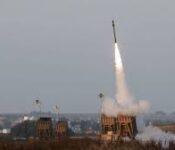Sukkot: A Basic Overview
The Sukkah
The holiday of Sukkos introduces the second half of the High Holiday season. The first half is somber and reflective; the second half is celebrated with joy. In our extreme gratitude to the Almighty for granting us yet another good year, we rejoice, revel and celebrate.
Sukkos falls on the fifteenth day of the Hebrew month, Tishrei. During the Eight (Seven in Israel) days of this holiday we erect outdoor huts (Sukkos) and cover them with foliage. When G-d took our ancestors out of Egypt they traveled through the desert for forty years. G-d constructed a canopy of clouds to protect them from the desert elements.
The outdoor huts commemorate this miracle during the Sukkos holiday. We virtually move into the Sukkah for the duration of the holiday. We eat, sleep, study, and spend as much time as possible in the Sukkah.
During the holiday of Sukkos we also perform the Mitzvah of Arba Minim (the four species). The Torah commands us to take a Palm frond, a Willow branch and a Myrtle branch, and bind them together. We are then commanded to take an Esrog, Citron, (a citrus fruit from the lemon family) and hold it together with the three branches. We recite a special blessing and shake the four species while holding them together.
The four species
The four species represent four different segments of the Jewish population. The Esrog has a pleasant fragrance and a delightful flavor. The Myrtle has a pleasant fragrance but no flavor at all. The Date Palm has a pleasant flavor but no fragrance and the willow branch has neither fragrance nor flavor.
In the mystic tradition, flavor represents Torah study and scent represents observance of Mitzvos. Accordingly the four species respectively represent four different segments of the Jewish population. A, the Jew who studies Torah but not does observe the Mitzvos. B, the Jew who observes the Mitzvos but does not study Torah. C, the Jew who does both. D, the Jew who does neither.
To properly observe this mitzvah, all four species must all be present and bound together. The Mitzvah is not valid if even one of the species is missing from the bond. The message inherent in this Mitzvah is that of unity.
Our people, as a whole, are incomplete when even one person is missing from our bond. This is true of every Jew, notwithstanding his / her level of Mitzvah observance or Torah study.
The holiday lasts for eight days. The first and the last days of the holiday are sanctified and holy. The rest of the holiday is called Chol Hamoed (Intermediate days).
Simchas Beis Hashoeiva
Back when the temple stood in Jerusalem there were great celebrations and festivities during this holiday. The reason for the merriment was ritual based. The protocol of sacrifices included an order of libations brought to the altar. Ordinarily these libations consisted of wine. During the holiday of Sukkot the Torah instructs us to include a water libation. Because the water libation was brought only once a year it was greeted with great joy.
Leaders and lay people alike would dance through the night. In the temple great festivals were arranged, where the people rejoiced and the multitudes were entertained. The celebrations culminated in the early morning with a parade, led by priests, from the temple to the Shiloach well where water was drawn for the libations.
In commemoration we too rejoice during the nights of this holiday. Many Jewish communities arrange special festivities during these nights. The celebration is called (in Hebrew) Simchas Beis Hashoeivah.

























